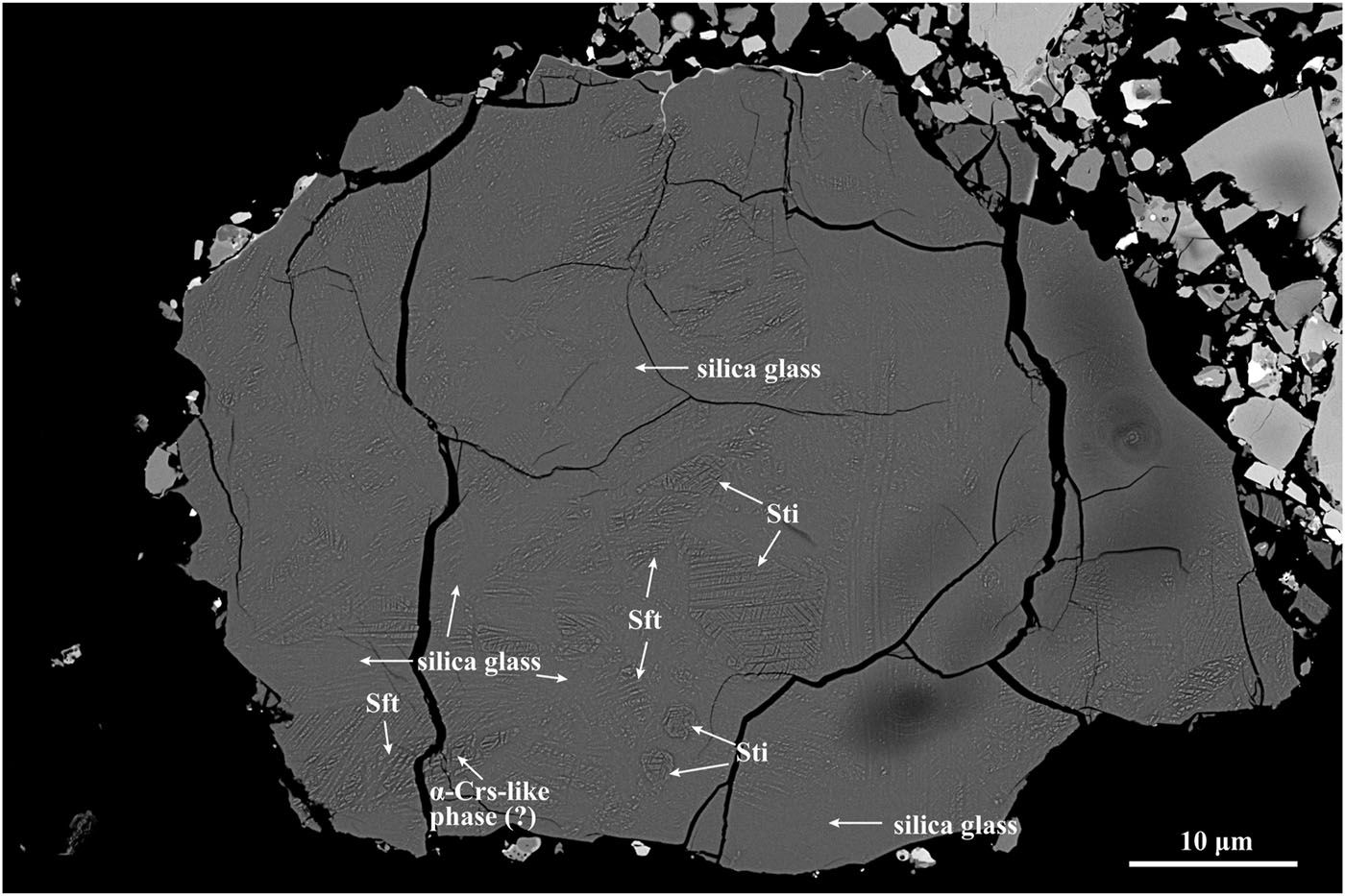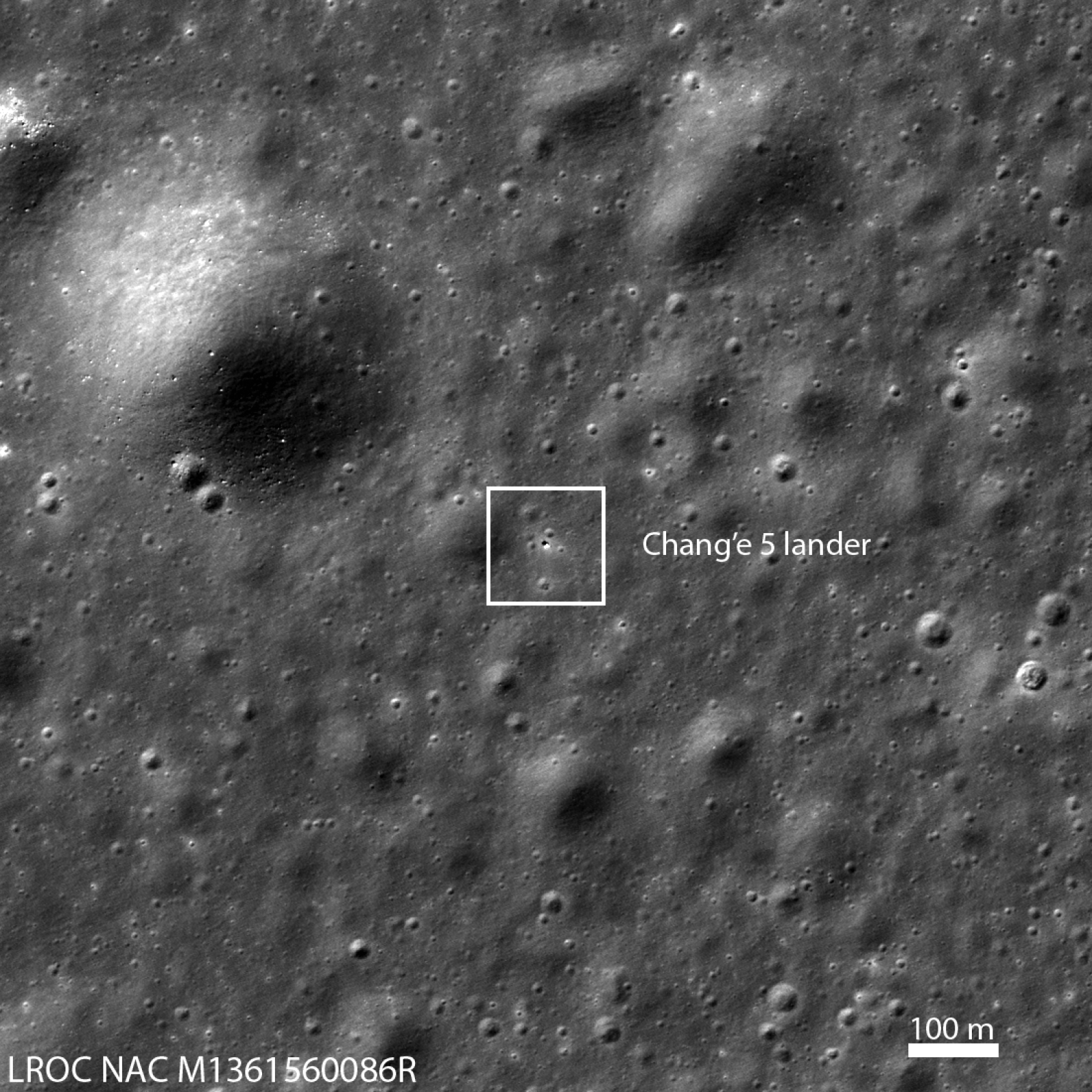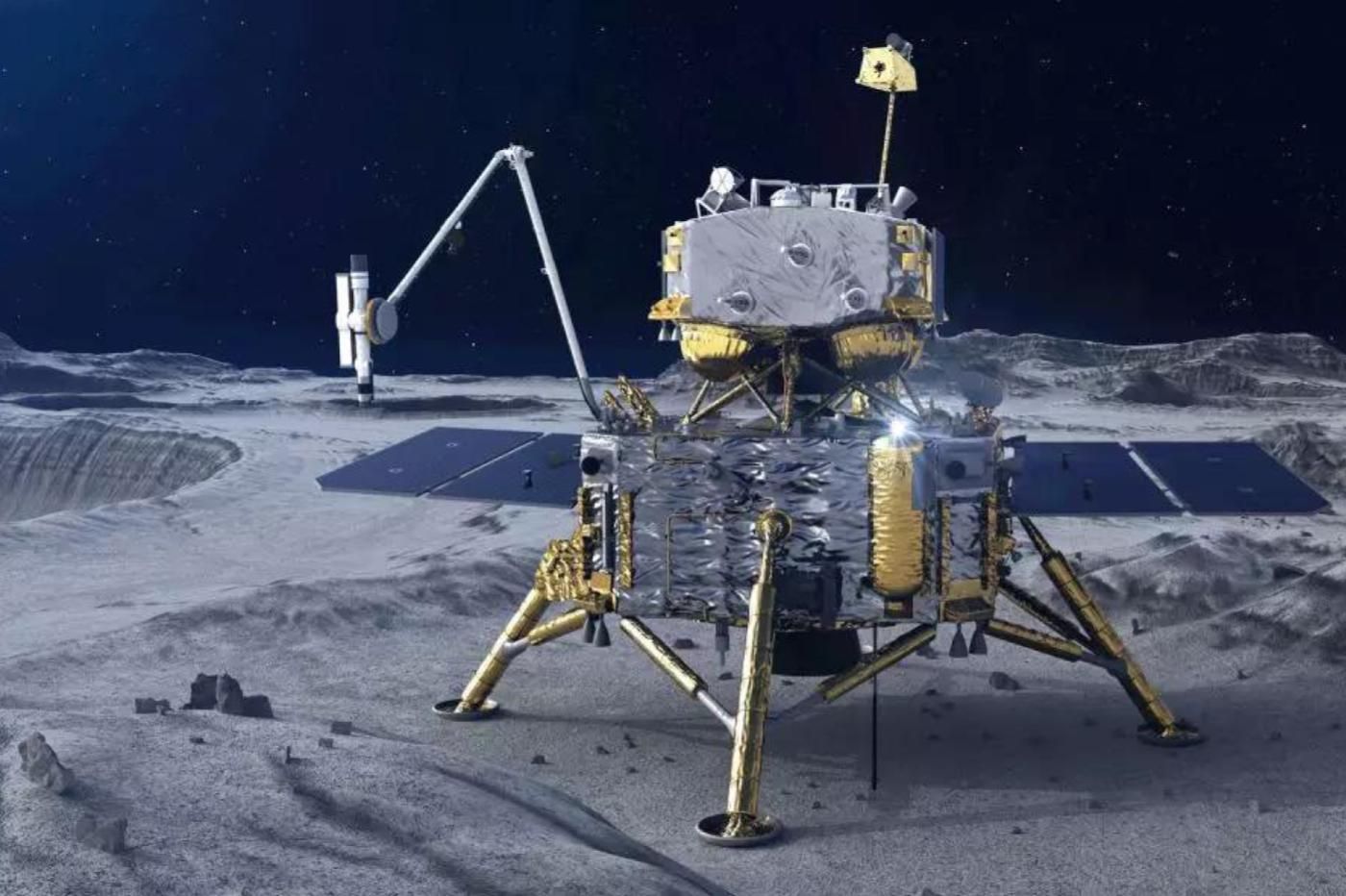Lunar Samples Collected by China Reveal a Puzzling Combination of Minerals
Follow us on Google News (click on ☆)

Backscattered electron (BSE) image of the silica fragment containing seifertite and stishovite in the CE-5 01GP regolith sample.
Geophys. Res. Lett. 49 (12), e2022GL098722 (2022). Copyright 2022 John Wiley & Sons.
Analysis of these samples led to the discovery of a new mineral, named changesite-(Y) by researchers. This discovery represents the identification of the sixth new lunar mineral so far.
The presence of changesite-(Y) suggests it was formed as a result of an asteroid impact, an event capable of altering the composition of the lunar surface layer of rock and dust, known as regolith. Computer models estimate that this impact could have created a crater ranging from 1.86 to 19.88 miles (3 to 32 kilometers) in diameter, depending on the impact angle.

Photograph from orbit of the Chang'e 5 lander on the Moon's surface taken by NASA's LRO orbiter.
The samples brought back by Chang'e-5 also reveal a combination of known silicate minerals, in particular seifertite and stishovite. These minerals, deposited by the collision that formed the Aristarchus crater, are of particular interest to scientists seeking to understand their formation and stability under the high pressures generated by asteroid impacts. The simultaneous presence of seifertite and stishovite in the samples is considered an enigmatic combination, given these minerals should only coexist under pressures far greater than those observed.
The study of these lunar samples is not limited to the discovery of new minerals. It also provides valuable clues about the Moon's tumultuous geological history, marked by countless asteroid impacts. This research helps to enhance our understanding of the Moon's evolution and the geological processes that have shaped its surface.

Artist's view of the Chang'e 6 mission
© CNSA / CLEP
China will continue to explore the Moon with its next mission, Chang'e-6, scheduled for May, which will attempt to bring back samples from the South Pole-Aitken basin, located on the far side of the Moon.